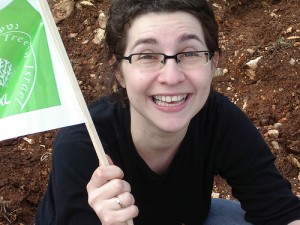 Listed as one of the oldest trees in the world, the Iranian cedar of Yazd, is dying.
Listed as one of the oldest trees in the world, the Iranian cedar of Yazd, is dying.
The oldest living Iranian creature, a cedar tree in Abarghu (or Abarkuh) near Yazd in center of Iran, is about to die.
There are different opinions about the real age of this famous tree considered a symbol of pre-Islam Iran (because of the respect that the pre-Islamic Iranians had for cedars as the symbol of happiness and beauty).
Some say that the cedar is 4000 years old, possibly even 8000. But as Mostafa Khoshnevis, an environmental expert says, by counting the circles in side the bark of the tree, the age of the tree is not more than 1200 years.
In any case, the cedar is one of the oldest trees in the world. It is famous that Marco Polo along with several Iranian historians had written about it.
Recent news reports from Iran suggest that the end of the life of this 25-meter tree is near. Like the Anne Frank chestnut tree in Amsterdam, all historical trees must one day die. But according to Khoshnevis, the main reason for the cedar dying in Iran, is tourism and the neglect of the responsible bodies in taking care of the soil of the area around the tree. Between 50 and 100 people visit the cedar daily and this makes the soil around the tree more compact. So the activity of the microorganisms in the soil and also the permeability of the soil become limited.
According to this environmental activist, plowing in a low depth of 5 centimeter can be a good method for solving the problem. During the past years, plowing the soil in order to save the tree has been done at a depth of about twenty centimeters and at this depth maybe some of the surface roots of the cedar are injured.
Previously a street had been built in constructed near the tree that made the living environment of the tree polluted.
Good conditions of the location that the cedar is in, was the main reason for the tree’s longevity. However it is now located in an urban park and is accessible for many people just to take a look. Of course they do not have any bad intentions, but tourism to the tree is causing some adverse affects.
Some descriptions and photos of Abarkuh Cedar (in Persian)
Read more green articles about Iran:
NGOs Tell It On the Mountains in Iran (Clean Up!)
How Iran’s Ancient Zoroastrianism Funerals and Burials are Green
Iran Plans for Solar Energy in Tehran, But Cost’s a Limiting Factor
Image via save the cedar




Whether “Iranian” or not, It is Stunningly & Breathtakingly Beautiful. Peaceful. Wise. & Sacred. & every effort should be made to preserve it– by Iranians & non-Iranians, alike. I am humbled, exhilarated, & awed by it. & suffer deeply from my ineptitude to help it.
Few points pertinent to this subject should be mentioned here, which needs special attention.
A- Obviously the soil around this magnificent tree is now compacted due to growth of roots that occupy the space pushing the soil apart. there is a simple technic to loosen the soil by forcing high pressure air of around 500 to 1000 psi through a thin steel pipe rammed in to the ground around the tree . Number of holes could be 50 or 100 depending on the estimated where about of the root system. This operation will loosen the ground and create space for the enriched solution of water and required nutrients to be injected near the roots. This procedure is not expensive at all and simple that can be carried out as soon as possible. All needed is a good compressor and a needle shaped steel pipe designed to be driven in to the soil about 2 meters.
B- The oldest country is Iran without any doubt. please go to Wikipedia and search the countries history and their age of existence. The list is complete and documented.
3000 years ago, it was called the “Persian Empire”
I am talking about the modern nation-state that is today termed “Iran”, which only goes back about 500 years (from your first link, see “III – From Safavids to Modern Iran”)
There is no difference between Persia and Iran. That’s the mistake the western people usually make. Persia is a part of Iran, located in south. When in 550 B.C. Cyrus defeated Medes, the Persian Empire was established. Since then the non-Iranians called the land Persia because the Akamenids (like Cyrus) came from Persia (now pronounced Fars because the Arabs who invaded Iran in 7th century could not say P). This way of calling Iran was originated from the Greek historians like Herodotus. The Iranians (or Persians, no difference) have never called the whole land Persia. In 1936 the Iranian government changed the official name of the country from Persia to Iran. because the country included many races other than Persians. The goal was to create more unity. This is a wrong way of thinking. According to you, the name of the old country, nation and culture is Persia, so there has never been a nation/state like Iran. This is like you say there is no Nippon (the name the Japanese call their country) in the world because there is Japan. I think the problem is originated from the word “modern”. If this word means ten years, then we can erase all the history.
Finally, I would like to add that the word “Iran” have existed in the documents remaining from the first millennium B.C.
Joel B,
The place that the cedar is located was called “Iran” 3000 years ago. This name is ancient. It is surprising that you say this nation is 500 years old. Please get some more information about the history of Iran in the following links. There is info in some of the articles about thousands of years.
http://www.iranologie.com/history/history.html
http://www.parstimes.com/history/
http://www.historyworld.net/wrldhis/PlainTextHistories.asp?historyid=aa65
http://sitara.com/iran/history.html
The modern nation-state of Iran is less than 500 years old, therefore the tree is no “Iranian”
If he/she lives in Iran today, then I guess he is. Such is what happens when borders and politics change.